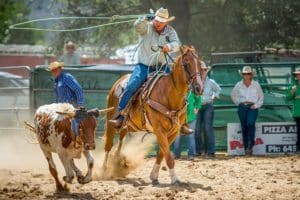Understanding the Equine Brain Through Dissection

“To be honest, I think you can read a hundred textbooks on the brain and brain function, and you can see brain structures in two dimensions on a page, but the only way to properly understand the three-dimensional relationships between the brain structures is to actually get into the laboratory and see the brain in front of you,” Hemmings said. “That’s the very best way to understand the different structures and how they interact.”
Hemmings and Greening provided participants with three skinned, chilled, and “ethically sourced” whole horse heads and engaged in a group dissection that examined the individual physical structures of the horse brain in context with the horse’s head, other anatomical structures, and resulting behaviors.
As fellow scientists and equine practice professionals, they also shared each other’s knowledge about horses’ minds, Hemmings added.
“Repeatedly, whenever I dissect the brain, it reminds me just how little we know about this structure–and that counts for both the horse and the human,” he explained. “And I think that’s one of the really exciting reasons to be a researcher in this field, is that there’s so much we don’t know and so many opportunities for gaining knowledge.”
During the workshop, participants shared knowledge from their varied backgrounds, leading to important insights about equine cognition. At one table, for example, participants got heavily involved in the discussion of stereotypical behavior such as cribbing. “We were considering the science behind why the behavior was occurring–which is massively reassuring from when I started doing this 10 years ago,” Greening said, referring to biological components involved in the development of such abnormal repetitive behaviors.
“It was useful to hear that there is broader acceptance for the knowledge that’s been generated over the last 10 years within practice,” she told The Horse. “The participants also raised some interesting questions that generated really interesting and novel thought.
“I think there is such a limited pool of information specifically about the equine brain, and equine neuroanatomy, to be able to answer (all) our questions,” she continued. “It may help us benefit from thinking about horses’ behavior from a different standpoint. So, not just in response to the environment externally, but actually internally–what’s driving that behavior–so that maybe that would help reduce anthropomorphism or may give a different perspective on why the behavior is occurring.”
The dissection exercise could lead to a better appreciation of practical aspects of equine behavior, she added. “We talk about behavior and how horses are so different, but to have a real appreciation in the moment–to see the brain, to feel the brain as pieces go around the table, and to talk about how that brain is operating, to make the horse so different in how it perceives and understands the world–is really important,” Greening said.

Related Articles
Stay on top of the most recent Horse Health news with

















